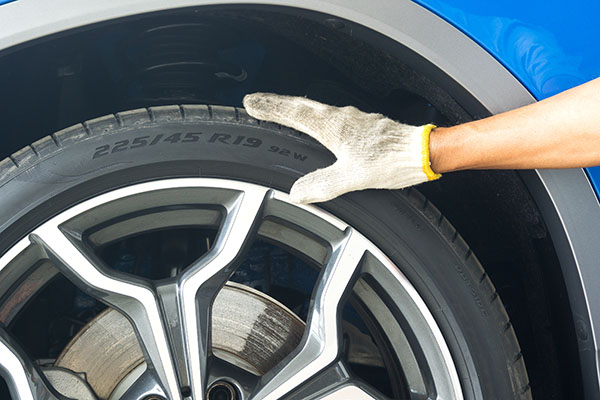
Regularly checking your tire tread wear is an essential part of maintaining safe and reliable vehicle performance. The condition of your tires affects your vehicle's traction, handling, and braking capabilities, making it crucial to monitor their tread depth. In this blog post, we'll provide you with a step-by-step guide on how to check tire tread wear effectively.
Tools you will need:
Tire tread depth gauge - a small tool specifically designed for this purpose
If you don't have a tread depth gauge:
Use a penny as a substitute (more on that later)
1. Identify the Tread Wear Indicator Bars
Tires have tread wear indicators that if you don’t know where they are exactly, you might mistake them for a tread. Usually it is a line that cuts through the width of the wheel - it is popping out of the wheel slightly.
2. Use a Tread Depth Gauge
Take the tread depth gauge and insert the measuring probe into the tread groove. Press it down until it reaches the bottom of the groove, ensuring that it is parallel to the surface of the tire. Read the measurement displayed on the gauge. If you want to make sure everything is okay, do this to a couple of different locations.
3. Check Tread Depth with a Penny
If you don't have a tread depth gauge, you can use a penny to get a rough estimate of your tire's tread depth. Insert the penny into the tread groove with Lincoln's head facing down. If the top of Lincoln's head is visible, it indicates that the tread depth is less than 2/32 of an inch (the minimum legal requirement in most regions). This suggests that the tire is nearing the end of its usable life and should be replaced.
4. Evaluate Tread Wear Patterns
While checking the tread depth, also pay attention to any irregular wear patterns on your tires. Uneven wear can be a sign of alignment issues, improper inflation, or suspension problems. If you notice any unusual wear patterns, it's advisable to have your vehicle inspected by a qualified technician to address any underlying issues.
5. Compare Tread Depth Measurements
After measuring the tread depth on each tire, compare the readings to determine if they are within the recommended range. It's generally recommended to replace tires when the tread depth reaches 4/32 of an inch for better-wet traction or 2/32 of an inch for safer overall performance.
Noticed You Need New Tires?
If you are from Liberty, TX, or the surrounding area, make sure to visit Hometown Tire and Auto for your next tire change or alignment procedure. Our team will be happy to help out and get you back on the road ASAP.